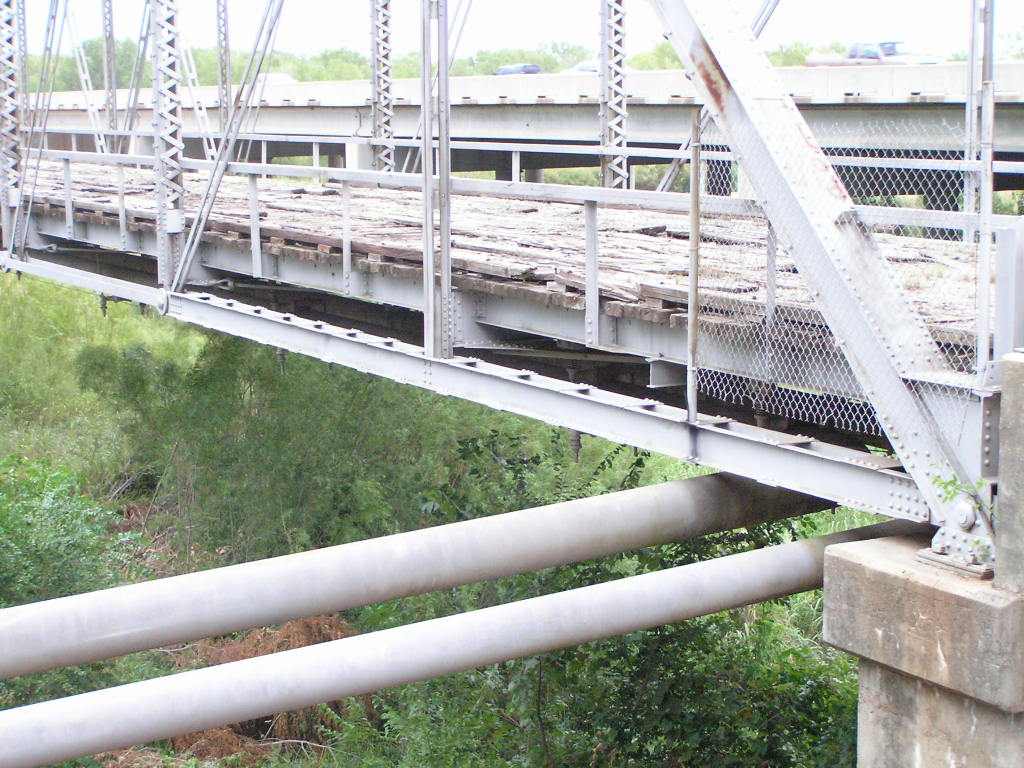
Standing today as the largest through truss bridge still existent in Oklahoma, this bridge was built in 1923.
The history of this bridge is a little complex. It was planned in 1915-1916 as a grand multiple-span concrete arch bridge, similar to Tulsa's 11th street bridge. However, not long after construction was to start, the contractor skipped town, and eventually the US, with the construction money. In 1919, it was made Oklahoma Federal Aid Project 1 (FAP 1), and was built by the Missouri Valley Bridge & Iron Co., of Leavenworth Kansas.
The bridge consists of 10 through Parker spans of 210 feet each. each span is of a state-standard design and is a combination pin-connected and riveted design.

Above, the bridge as viewed from the south end. The bridge has been closed to traffic since the 1980's. Note the rather flimsy-looking telephone/telegraph masts mounted on top of the spans.
Below, a view from the deck looking south through the south most span. The railings are not original, though they would have been metal.


Above and Below, these photos give some close shots of the portal construction. This same portal design is frequently seen on Oklahoma bridges of the 1920's. Note in the picture below, the angle that was cut. This would have been part of the curved knee-brace in the corner of the portal that adds a slight touch of grace to an otherwise drab portal.


Above, a long view through the bridge. You'll note that the bridge is built on a slight vertical curve. This is not from the earth's curvature. The trees are about the middle of the bridge.
Below, this photo gives a nice profile view of the southern 2/3rds of the structure.


Above, detail of the hip connection. Below, a close view of the truss. The members in the middle 2 panels are riveted to the upper chord, while the lower chord connections are made by conventional pinned joints. You'll note that the use of a horizontal strut through the middles X's braces the vertical posts enough that there sizes are dramatically smaller than the unbraced ones.

Below, the hybrid riveted/pinned connections are not limited to the center panels. Here, the hip vertical is riveted to to a built-up lower chord. It is only in the center 6 panels of each truss that the lower chord is composed if I-bars. Built-up sections of channels and plates are used for the balance.


Above, a final view of the bridge. The Newcastle Bridge, as this bridge has been called, was, like other large bridges of the 1920's, built at a time when bridges were becoming heavier, and the traditional pinned connections were being replaced with riveted ones. By 1930, all new bridges in Oklahoma would be riveted.